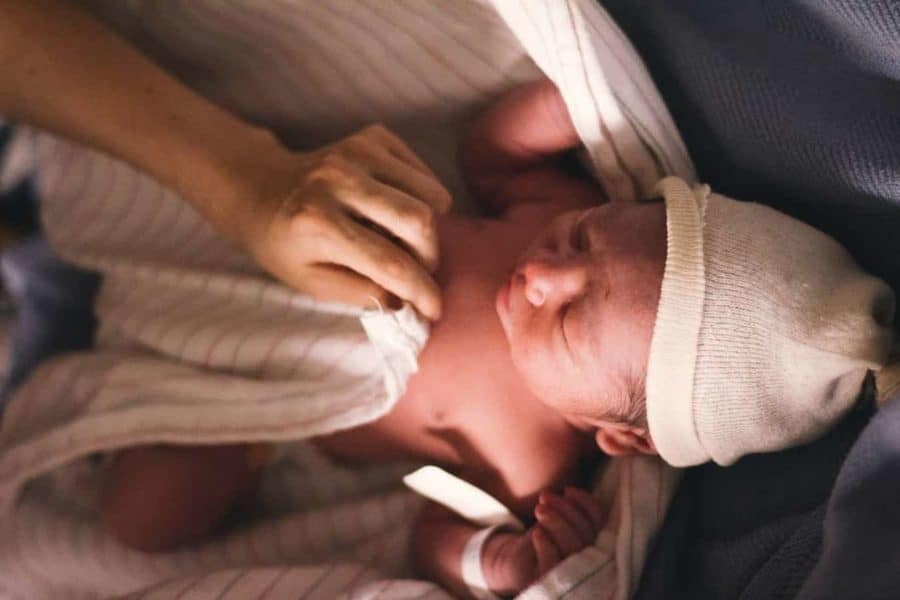Humans aren’t born with mature brain circuitry that attaches emotions to the things they see or hear in their environment, a new study shows.
Researchers studying brain scans of newborns found that the part of the brain involved in experiencing emotions isn’t functionally connected in a mature way with the regions that process visual or auditory stimuli.
In adults, the connections between those parts of the brain allow us to feel fear when we see a bear in the woods or love when we see the face of a family member.
But it appears that it takes at least a few months for babies to be able to connect what they see with specific higher-level emotions, said Zeynep Saygin, co-author of the study and assistant professor of psychology at The Ohio State University.

“It’s a finding we didn’t really expect. We thought these connections might be mature right from birth,” said Saygin, who is a core faculty member of Ohio State’s Chronic Brain Injury Program.
“This suggest that newborns analyze the emotional content of their surroundings at only a very basic level.”
Saygin conducted the study with Heather Hansen and Jin Li, graduate students in psychology at Ohio State. Their results were published today in the journal PLOS ONE.
The researchers analyzed fMRI scans of the brains of 40 newborns, all less than a week old, who were part of the Developing Human Connectome Project. They compared these to similar scans from 40 adults who participated in the separate Human Connectome Project.
They were looking for the connections between the amygdala, the part of the brain involved with experiencing emotions, and the occipitotemporal (or visual) cortex, which is primarily involved with processing stimuli from what we see.
“The amygdala tags visual stimuli with an emotional value,” Saygin said.
“For example, is this thing I am seeing dangerous? Should I be afraid? Should I approach it or avoid it?”
In adults, there is a specific form of functional connection between the two parts of the brain, Saygin said. The amygdala has a stronger connection to high-level sensory regions of the visual cortex – the part that processes faces, bodies and objects. These are the types of stimuli that may warrant an emotional reaction.
The amygdala in adults is not as strongly connected to the primary sensory regions of the visual cortex, which are involved with detecting angles, lines, edges and light, things that have less emotional content.
Moreover, adults show a similar pattern for auditory regions too. In adults, the amygdala has a stronger connection to high-level auditory regions, like regions that process speech, and a weaker connection to primary auditory regions, such as regions that detect frequency information.

“Seeing this pattern for both visual and auditory regions was affirming, as it demonstrates that the amygdala connects more with areas that process complex stimuli – things that would warrant an emotional response – and not just to areas that are closer in proximity to the amygdala,” said Hansen, lead author of the study.
This study found that newborns, unlike adults, had similar types of connections between the amygdala and all parts of the visual and auditory cortex, with not much differentiation among them.
Other research suggests that the more adult-like connections are present in babies within a few months after birth. But this is the first study to look at newborns, Saygin said.
“We believe that babies need more visual experience and maturation in order to be able to attach emotional value to visual stimuli,” she said.
Saygin’s lab at Ohio State is currently studying babies from birth to age 3 to learn more about how and when young children develop the ability to connect what they see with the proper emotion.
The research has important clinical implications because the amygdala has a role in a variety of disorders that begin early in life, including autism and anxiety.
“It is crucial to fully understand how the amygdala connects to the rest of the brain across early development,” she said.
“By learning about the course of its development, we should be able to say what is typical and how it may go awry. That may lead us to new diagnostic and treatment interventions.”
The research was supported in part by the Alfred P. Sloan Foundation. Analyses were completed using the Ohio Supercomputer Center.


